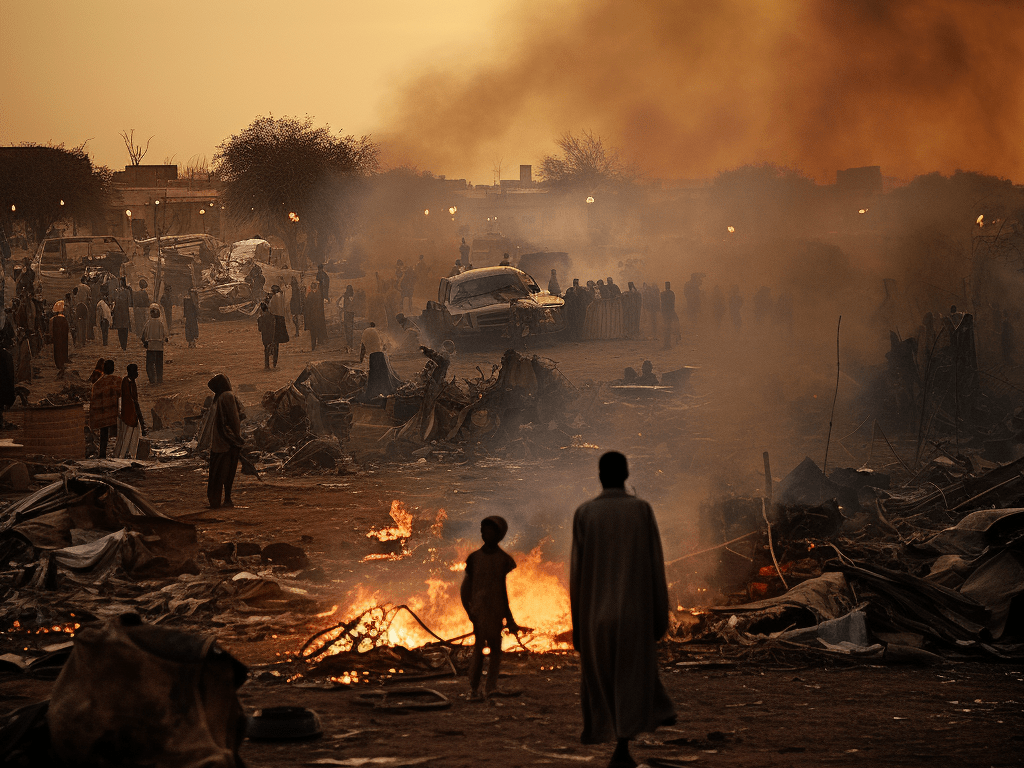
Unveiling the Complexities of the Sudan Crisis: No End in Sight after Nearly 50 Days of Fighting
Introduction:
As 50 days of relentless fighting pass, the Sudan crisis continues to plague the nation, leaving no end in sight for the unyielding conflict. This comprehensive article delves deep into the complexities surrounding this crisis. Drawing insight from the informative article by Voice of America (VOA) [1], we will explore the causes, impact, and key players involved. Join us on this journey to gain a deeper understanding of the factors contributing to the persistence of this strife and the implications it holds for Sudan’s future.
Unraveling the Causes of the Sudan Crisis:
The Sudan crisis is rooted in a deeply ingrained history of ethnic divisions, political power struggles, and socioeconomic disparities. To fully comprehend the situation, it is crucial to explore these underlying causes.
The primary fault lines of the Sudan crisis lie in long-standing ethnic divisions and power struggles for dominance. The rivalry between the Arab-majority government and non-Arab ethnic groups, such as the Nuba, Darfurians, and South Sudanese, has fueled tensions for decades. The struggle for resources, territories, and political representation has further exacerbated these divisions, resulting in prolonged conflict.
Unchecked economic disparities have played a crucial role in fueling the crisis. Wealth distribution skewed heavily in favor of the ruling elite, primarily based in the capital city of Khartoum, while neglecting underdeveloped regions. Marginalized communities, lacking access to basic services, education, and employment opportunities, have resorted to rebellion as a means to address their grievances.
Key Players and Their Repercussions:
Understanding the key players and their roles is essential to grasp the complex dynamics of the Sudan crisis. This conflict involves various parties, each with their own vested interests.
The government, led by President Omar al-Bashir at the time of the VOA article, has demonstrated an inclination towards maintaining a firm grip on power. Armed forces loyal to the government have consistently clashed with rebel groups, seeking greater autonomy or regime change. This power struggle has resulted in substantial human rights violations, civilian casualties, and mass displacements.
The Sudan crisis has also attracted the attention of international actors and regional powers, further complicating the situation. Their involvement, driven by geopolitical interests, has often inadvertently prolonged the conflict. Interference, both overt and covert, has included arms supply to warring factions, diplomatic negotiations, and peacekeeping initiatives.
Consequences and Humanitarian Implications:
The devastating consequences of the Sudan crisis cannot be understated, directly affecting millions of Sudanese people. Mass displacements, loss of life, and destruction of infrastructure have left communities in turmoil, significantly impacting social, economic, and developmental prospects.

Conclusion:
In light of the prolonged Sudan crisis, marked by nearly 50 days of incessant fighting, the prospects for a swift resolution remain elusive. The complex interplay of ethnic divisions, power struggles, and external influences have perpetuated the conflict, inflicting immense suffering on the Sudanese people. As stakeholders within the global community, it is imperative to acknowledge and address these complexities comprehensively. By doing so, we can pave the way for peaceful negotiations and sustainable solutions, ultimately leading to a brighter future for Sudan.
